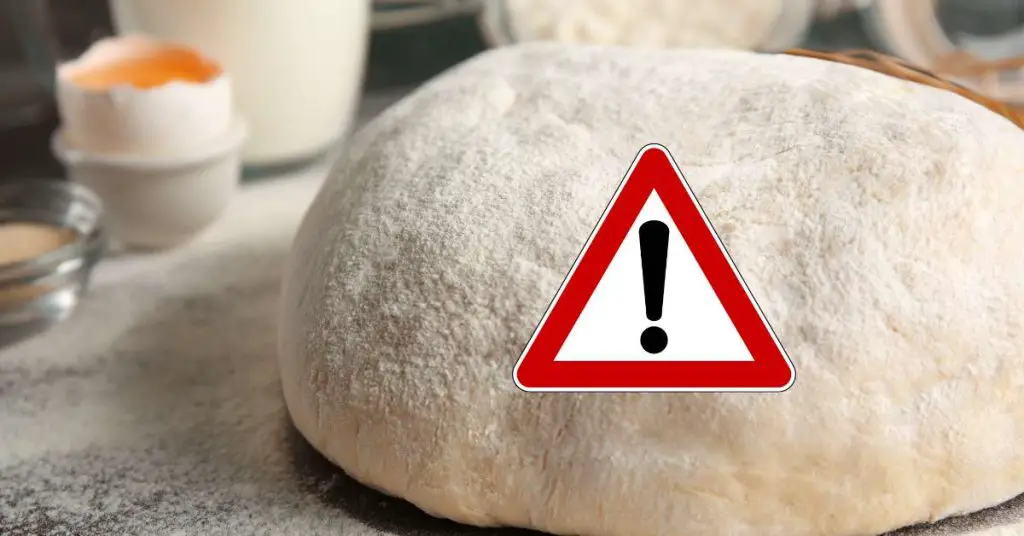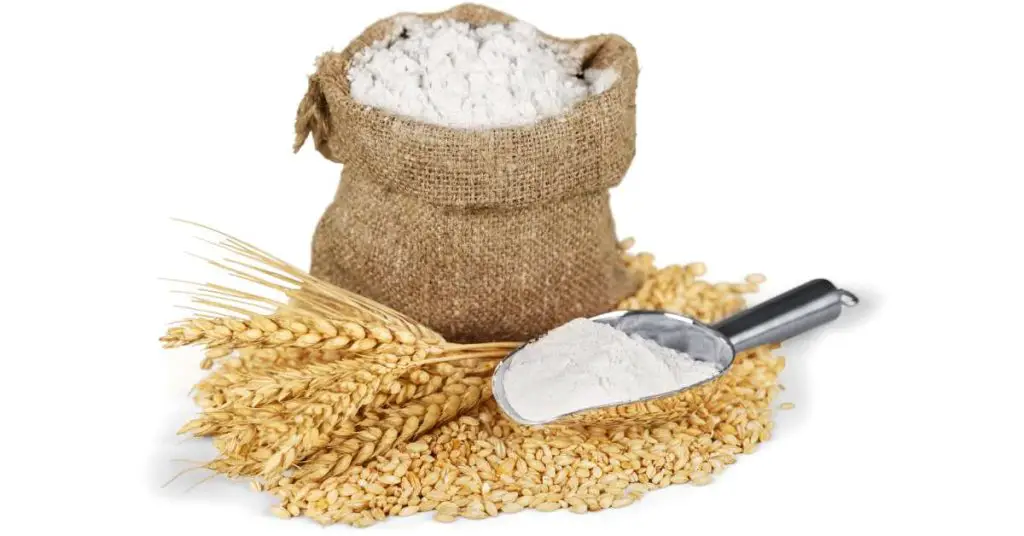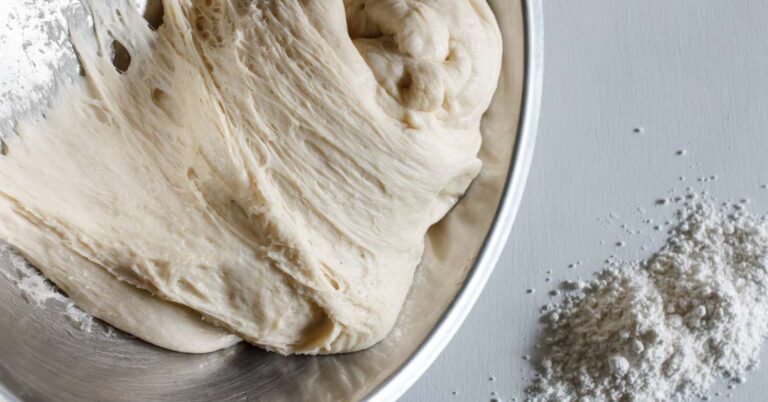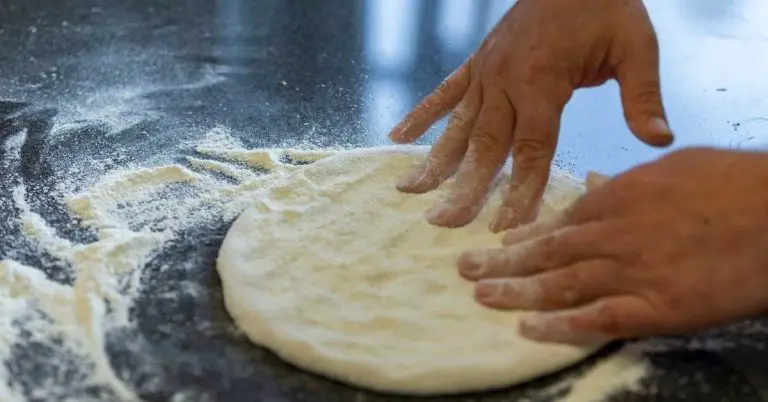Can You Eat Raw Pizza Dough? Will Undercooked Pizza Dough Make You Sick?
Homemade pizza is an amazing thing, especially if you’re following a high-quality homemade pizza crust recipe. Most of the goodness in eating pizza comes from cooking the crust all the way through until it’s crispy and golden brown.
But what if you accidentally undercook your pizza, or worse—what if you intentionally eat raw pizza dough? Is raw or undercooked pizza dough bad for you? Well, here’s the simple answer.
Eating raw or undercooked pizza dough isn’t just gross, it’s actually dangerous. Raw pizza dough can contain harmful bacteria like E. coli and Salmonella because raw flour isn’t sterilized before it’s sold to the consumer.
On the other hand, undercooked pizza dough (or crust) usually isn’t dangerous, but it can cause indigestion and bloating. This is because the ingredients haven’t been fully broken down during the baking process, meaning your own stomach has to work overtime to digest it.
The best way to avoid getting sick from pizza dough is pretty simple: never eat it raw, and make sure it’s fully cooked before eating it. Harmful bacteria can’t survive temperatures above 160F, while most pizza is cooked at well over 400F for several minutes at a time.

Understanding Raw Pizza Dough
Pizza dough isn’t too complicated—it’s normally just water, flour, yeast, and salt.
The reason pizza tastes so good is because it’s baked at a high temperature in a super hot oven. This makes the gluten and gas expand into the bubbles we all love so much, as well as makes the crust crispy and delicious.
Because pizza is so closely linked to its baked finished product, most people don’t really consider whether or not it’s safe to eat the dough raw.
I doubt very much that there are people out there interested in eating raw pizza dough, but unintentionally eating undercooked pizza dough is far more likely.
So what actually happens if you eat raw or undercooked pizza dough?
Why Raw Pizza Dough Can Make You Very Sick
On the surface, there shouldn’t be anything wrong with eating raw pizza dough because none of the ingredients are dangerous if eaten raw. But there’s actually more to the story than that.
Water, yeast, and salt are generally pretty safe to consume raw, but not flour is different. Even though raw flour isn’t dangerous to consume by itself, it can very easily get contaminated by harmful bacteria like E. coli and Salmonella.
In this way, uncooked flour is similar to other raw ingredients, like eggs and milk, where the food itself isn’t harmful, but the probability of contamination is high compared to other foods.
That said, it’s still unlikely that the flour you’re using to make pizza dough is actually contaminated with harmful bacteria—just like most eggs, milk, and vegetables, are perfectly safe to eat raw. But the risk is still something to be aware of, which is why we typically wash our vegetables, pasteurize our dairy, and cook our flour.
Why Raw Flour Is Potentially Dangerous To Eat
Flour in its raw form hasn’t undergone a kill step to kill bacteria like E. coli and Salmonella. Just like most food that’s grown in the ground, harmful germs can contaminate grain while it’s still in the field or at other steps during flour production.
Because most people wouldn’t even think of eating raw flour, there isn’t much demand to sterilize it before it gets to the consumers. The baking process is more than long enough and hot enough to kill anything harmful long before you eat it.
But that still doesn’t mean people don’t get sick from contaminated flour all the time. In fact, in 2016 there was a widespread E. coli outbreak in flour that made over 63 people sick. This is why you should always check to see if your flour is subject to a recall notice because you likely won’t hear about it unless you check.
Uncooked Flour Can Be Contaminated With Harmful Bacteria

As recently as 2023, General Mills issued a recall of 2, 5, and 10 pound bags of “Gold Medal” flour because of possible Salmonella contamination.
Before that, in 2019, there was a major recall of several different brands of flour due to possible contamination with E. coli. This affected some well known flour brands available at most grocery stores, like Pillsbury, Brand Castle, and even King Arthur, among several others.
These instances just serve as a warning that even well-known and trusted brands can be affected by bacterial contamination. This is why the CDC warns us to never consume raw dough or anything else that might contain these ingredients in their uncooked form.
Raw vs Uncooked Pizza Dough
Now that you know why it’s potentially dangerous to eat raw dough, it’s worth noting that there’s a huge difference between raw and undercooked pizza.
Raw pizza dough (by definition) has never been cooked. By contrast, undercooked pizza dough is a pizza that hasn’t been cooked long enough and still has a “doughy” crust.
Undercooked pizza crust might be a bit gross tasting, but it’s usually not harmful, at least not in terms of bacterial contamination. This is because even an undercooked pizza has still most likely been baked long enough to make it safe.
Think about it—all it takes to kill E. coli and Salmonella is a temperature of 160F/70C. Now consider that a typical pizza is baked at a minimum of 400F and as high as 1000F.
That means as long as the pizza was cooked for at least a minute or so, while it might be undercooked, it’s still probably safe to eat. This is especially true in the case of pizza crust, which is very thin and flat without much room for bacteria to linger before being cooked away.
In other words, unless you’re intentionally eating raw flour, you’re extremely unlikely be get food poisoning from undercooked pizza dough.
But if you read around online, you’ll find discussion threads where people wonder if they got food poisoning after feeling unwell from eating undercooked pizza crust.
Who knows what really happened to these people, but in all likelihood they’re just suffering from indigestion and not actual food poisoning.
Undercooked Pizza Dough Can Cause Indigestion
Beyond food poisoning from consuming harmful bacterias, normal indigestion is the most likely culprit for feeling unwell after eating an undercooked pizza.
There are a couple of specific reasons why undercooked dough is harder to digest than when it’s fully cooked, including yeast and the presence of anti-nutrients in the grain. Uncooked dough is also just generally harder for your body to digest as well.
- Yeast Fermentation: Eating pizza dough that’s not fully cooked makes your stomach work overtime. Baking helps break down the complex carbs in flour so they’re easy to digest. If that baking doesn’t happen, your gut’s on its own breaking down the carbs, and that can lead to indigestion.
- Hard to Digest: Undercooked pizza dough is much harder to digest than fully cooked dough. This is because the baking process helps break down the complex carbohydrates in the flour. When this doesn’t happen, your digestive system has to do all the heavy lifting by itself and this can cause indigestion.
- Antinutrients: Grains like wheat, which is used to make flour for pizza dough, contain substances known as “antinutrients”. These substances are usually destroyed when exposed to high heat, but in the case of uncooked dough they can still pose problems.
Safe Practices for Handling Pizza Dough
Given the risks of eating dough that’s raw and undercooked, it’s useful to know when your pizza is fully cooked.
A fully cooked pizza crust should be dry and crispy on the outside with a light golden brown color—or darker depending on how well-done you like it.
It’s also possible that your pizza crust is cooked completely on the outside but still has a thin layer of undercooked dough in the middle. This usually comes in the form of a “gummy” layer of dough right under the sauce and cheese.
In most cases, such a thin layer of undercooked dough is unlikely to cause food poisoning or even indigestion—it’s just a little gross.
Also, and this should go without saying—don’t be tempted to have a little taste of your pizza dough before you cook it. It won’t tell you anything about the quality of the dough, it won’t taste good, and it can potentially make you sick.
So, as the CDC says, “just say no to raw dough”.
Key facts from this article:
- Eating raw pizza dough is dangerous because it can cause food poisoning from bacteria like E. coli and Salmonella.
- Flour used for pizza dough is not sterilized so it can be contaminated by harmful bacteria from the field or during processing.
- Undercooked pizza dough can cause indigestion and bloating since the dough ingredients will need to be broken down entirely by your own digestive system.
- Yeast continues fermenting in undercooked dough, producing gas that leads to bloating and other digestive issues.
- Raw flour contains antinutrients that can cause digestive problems if not destroyed by cooking at high heat.
- Bacteria like E. coli and Salmonella are killed once the dough reaches 160°F while most pizza is baked between 400°F and 1000°F—meaning even undercooked pizza is probably safe to eat.
- Fully cooked pizza crust should be crispy, golden brown outside with no uncooked dough inside.
- Check for recalls on flour, as even major flour brands like Gold Medal and King Arthur have been affected.
- Never eat raw dough or taste it before baking. Wait until fully cooked before eating.
- A thin layer of undercooked dough within a pizza is unlikely to cause illness or indigestion but it will still taste gross.
Related Questions:
Can raw pizza dough be digested?
Yes, raw pizza dough can be digested—but not easily. Normally, the intense heat of an oven does most of the work breaking down the nutrients in the dough so they’re easily digested. This means, if the dough isn’t cooked enough, it can lead to gas and bloating.
What happens if you eat slightly raw pizza dough?
While you should always avoid eating undercooked and raw pizza dough, if you happen to eat a bite of slightly raw or undercooked pizza dough, it’s very unlikely to cause you any problems. As long as your pizza dough has been cooked a minimal amount, it’s probably enough to kill any harmful bacteria that causes food poisoning.






